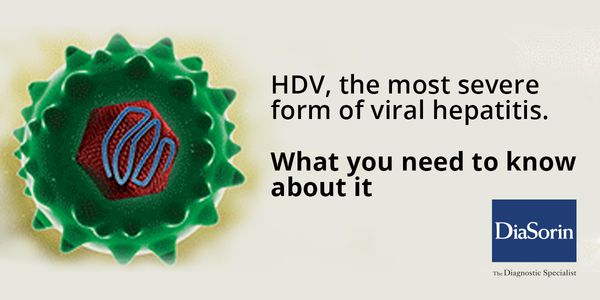Viral entry
Viral entry is the first step of infection in the life cycle of a virus. When a virus achieves contact with a host cell, viral material is introduced into the host cell. Once the virus has entered the host cell, it will begin to produce proteins and, if the virus is successful, will gain control of the host cell.
-
NOV 17, 2022 | 8:00 AMDate: November 17, 2022 Time: 8:00am PST, 11:00am EST Genome editing is—or will soon be—in the clinic for several diseases and more applications are currently under development....Speaker: Natalia de Val , Zuben Brown , Veer BhattPresented at: Thermo Fisher Scientific - Electron Microscopy Webinars
Sponsored By: Thermo Fisher ScientificSEP 08, 2022 | 10:30 AMAlphaviruses are enveloped RNA viruses that cause disease in humans ranging from acute febrile illness with rash and arthritis to lethal encephalitis. Like many other mosquito-borne viruses,...SEP 08, 2022 | 6:00 AMRecent outbreaks of Ebola virus (EBOV) and severe acute respiratory syndrome coronavirus 2 (SARS-CoV-2) have exposed our limited therapeutic options for such diseases and our poor understand...SEP 06, 2022 | 12:00 PMHuman intestinal epithelial cells (hIECs) are arranged as a monolayer of cells and provide the first line of defense against invading pathogens. Upon viral infection hIECs upregulate type I...MAY 04, 2022 | 10:30 AMThe coronavirus SARS-CoV-2 has led to a worldwide pandemic. Beside respiratory symptoms, infected people may develop neurologic dysfunctions such as loss of smell and taste, also seizures, a...Speaker: Susanne Krasemann, MD, PhDDEC 14, 2021 | 7:00 AMDate: December 14, 2021 Time: 7:00am (PST), 10:00am (EST) Several fast-spreading variants of severe acute respiratory syndrome coronavirus 2 (SARS-CoV-2) have become the dominant circulating...Speaker: Bing ChenPresented at: Thermo Fisher Scientific - Electron Microscopy Webinars
Sponsored By: Thermo Fisher ScientificAPR 14, 2021 | 1:30 PMSeveral SARS-CoV-2 variants are circulating globally. The most prominent variants of concern, including the B.1.1.7, B.1.351 and B1.1.28 lineages, not only carry a constellation of genetic m...Speaker: Anthony Tong, PhD , Subodh NimkarAPR 14, 2021 | 6:00 AMCOVID 19 is caused by a new coronavirus , SARS-CoV-2, which is highly infectious and can cause a wide spectrum of symptoms and affect multiple human systems. What we have learned from other...NOV 05, 2020 | 9:00 AMDATE: November 5, 2020 TIME: 9:00am (PDT), 12:00pm (EDT) With accelerating development and approval of cell therapies, biologic drugs, and antiviral treatments comes a need for more robust a...SEP 17, 2020 | 3:30 PMThere are an urgent need for antivirals to treat the newly emerged SARS-CoV-2. We set out to develop cell-based screens to repurpose existing drugs for use against SARS-CoV-2. Our goal was t...SEP 10, 2020 | 1:00 PMIn Pacific Northwest watersheds several species of Pacific salmonid fishes are hosts for the rhabdovirus infectious hematopoietic necrosis virus (IHNV). In this multi-host ecosystem speciali...SEP 09, 2020 | 12:00 AMTo establish productive infection, plant viruses need to be able to efficiently invade and spread within a plant. Most viruses are introduced into a plant via the epidermal or mesophyll cell...SEP 08, 2020 | 12:00 PMWhile the frequency of pandemic threats seems to be increasing, we fortunately have new tools and technologies to make vaccines with more precision and speed and that support a more proactiv...JUN 24, 2020 | 9:00 AMDATE: June 24, 2020 TIME: 9:00am PT, 12:00pm ET Some of the key factors in viral pathogenesis are the molecular mechanisms enabling viral entry into cells. Inhibitors of viral entry are ofte...APR 02, 2020 | 8:00 AMDATE: April 2, 2020 TIME: 8:00am PT, 11:00am ET Cyclins A2 and E1 regulate the cell cycle by promoting S phase entry and progression. We recently identified a hepatocellular carcinoma (HCC)...NOV 15, 2018 | 6:00 AMDATE: November 15,2018TIME: 06:00am PST, 09:00am EST, 3:00pm CET Hepatitis D virus (HDV) is a unique RNA virus that requires the hepatitis B surface antigen (HBsAg) to...
NOV 17, 2022 | 8:00 AM
Date: November 17, 2022 Time: 8:00am PST, 11:00am EST Genome editing is—or will soon be—in the clinic for several diseases and more applications are currently under development....
Speaker:
Natalia de Val
, Zuben Brown
, Veer Bhatt
Presented at: Thermo Fisher Scientific - Electron Microscopy Webinars
Sponsored By: Thermo Fisher Scientific
Sponsored By: Thermo Fisher Scientific
SEP 08, 2022 | 10:30 AM
Alphaviruses are enveloped RNA viruses that cause disease in humans ranging from acute febrile illness with rash and arthritis to lethal encephalitis. Like many other mosquito-borne viruses,...
SEP 08, 2022 | 6:00 AM
Recent outbreaks of Ebola virus (EBOV) and severe acute respiratory syndrome coronavirus 2 (SARS-CoV-2) have exposed our limited therapeutic options for such diseases and our poor understand...
SEP 06, 2022 | 12:00 PM
Human intestinal epithelial cells (hIECs) are arranged as a monolayer of cells and provide the first line of defense against invading pathogens. Upon viral infection hIECs upregulate type I...
MAY 04, 2022 | 10:30 AM
The coronavirus SARS-CoV-2 has led to a worldwide pandemic. Beside respiratory symptoms, infected people may develop neurologic dysfunctions such as loss of smell and taste, also seizures, a...
Speaker:
Susanne Krasemann, MD, PhD
DEC 14, 2021 | 7:00 AM
Date: December 14, 2021 Time: 7:00am (PST), 10:00am (EST) Several fast-spreading variants of severe acute respiratory syndrome coronavirus 2 (SARS-CoV-2) have become the dominant circulating...
Speaker:
Bing Chen
Presented at: Thermo Fisher Scientific - Electron Microscopy Webinars
Sponsored By: Thermo Fisher Scientific
Sponsored By: Thermo Fisher Scientific
APR 14, 2021 | 1:30 PM
Several SARS-CoV-2 variants are circulating globally. The most prominent variants of concern, including the B.1.1.7, B.1.351 and B1.1.28 lineages, not only carry a constellation of genetic m...
Speaker:
Anthony Tong, PhD
, Subodh Nimkar
APR 14, 2021 | 6:00 AM
COVID 19 is caused by a new coronavirus , SARS-CoV-2, which is highly infectious and can cause a wide spectrum of symptoms and affect multiple human systems. What we have learned from other...
NOV 05, 2020 | 9:00 AM
DATE: November 5, 2020 TIME: 9:00am (PDT), 12:00pm (EDT) With accelerating development and approval of cell therapies, biologic drugs, and antiviral treatments comes a need for more robust a...
SEP 17, 2020 | 3:30 PM
There are an urgent need for antivirals to treat the newly emerged SARS-CoV-2. We set out to develop cell-based screens to repurpose existing drugs for use against SARS-CoV-2. Our goal was t...
SEP 10, 2020 | 1:00 PM
In Pacific Northwest watersheds several species of Pacific salmonid fishes are hosts for the rhabdovirus infectious hematopoietic necrosis virus (IHNV). In this multi-host ecosystem speciali...
SEP 09, 2020 | 12:00 AM
To establish productive infection, plant viruses need to be able to efficiently invade and spread within a plant. Most viruses are introduced into a plant via the epidermal or mesophyll cell...
SEP 08, 2020 | 12:00 PM
While the frequency of pandemic threats seems to be increasing, we fortunately have new tools and technologies to make vaccines with more precision and speed and that support a more proactiv...
JUN 24, 2020 | 9:00 AM
DATE: June 24, 2020 TIME: 9:00am PT, 12:00pm ET Some of the key factors in viral pathogenesis are the molecular mechanisms enabling viral entry into cells. Inhibitors of viral entry are ofte...
APR 02, 2020 | 8:00 AM
DATE: April 2, 2020 TIME: 8:00am PT, 11:00am ET Cyclins A2 and E1 regulate the cell cycle by promoting S phase entry and progression. We recently identified a hepatocellular carcinoma (HCC)...
NOV 15, 2018 | 6:00 AM
DATE: November 15,2018TIME: 06:00am PST, 09:00am EST, 3:00pm CET Hepatitis D virus (HDV) is a unique RNA virus that requires the hepatitis B surface antigen (HBsAg) to...
















